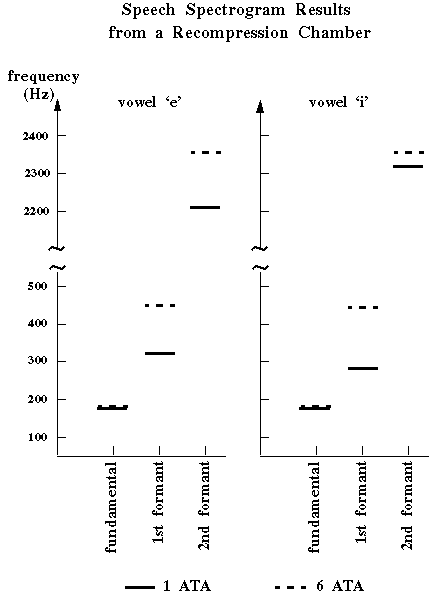
Divers undergoing recompression in a hyperbaric chamber sound funny. It has nothing to do with a DCS hit. It's caused by the reaction of the vocal tract to increased ambient air pressure. Studies of how high air pressures affect speech have shown that there is approximately a 4% loss in intelligibility for each atmosphere of pressure increase. The voice assumes a more 'nasal' quality.

REFERENCES:
J. Adolfson and T. Berghage, 'Perception and Performance Under Water' (John Wiley and Sons, New York, 1974), Chapter VI.
G. Fant and B. Sonesson, 'Diver's Speech in Compressed Air Atmosphere', Mil. Med. 132:434 (1967)